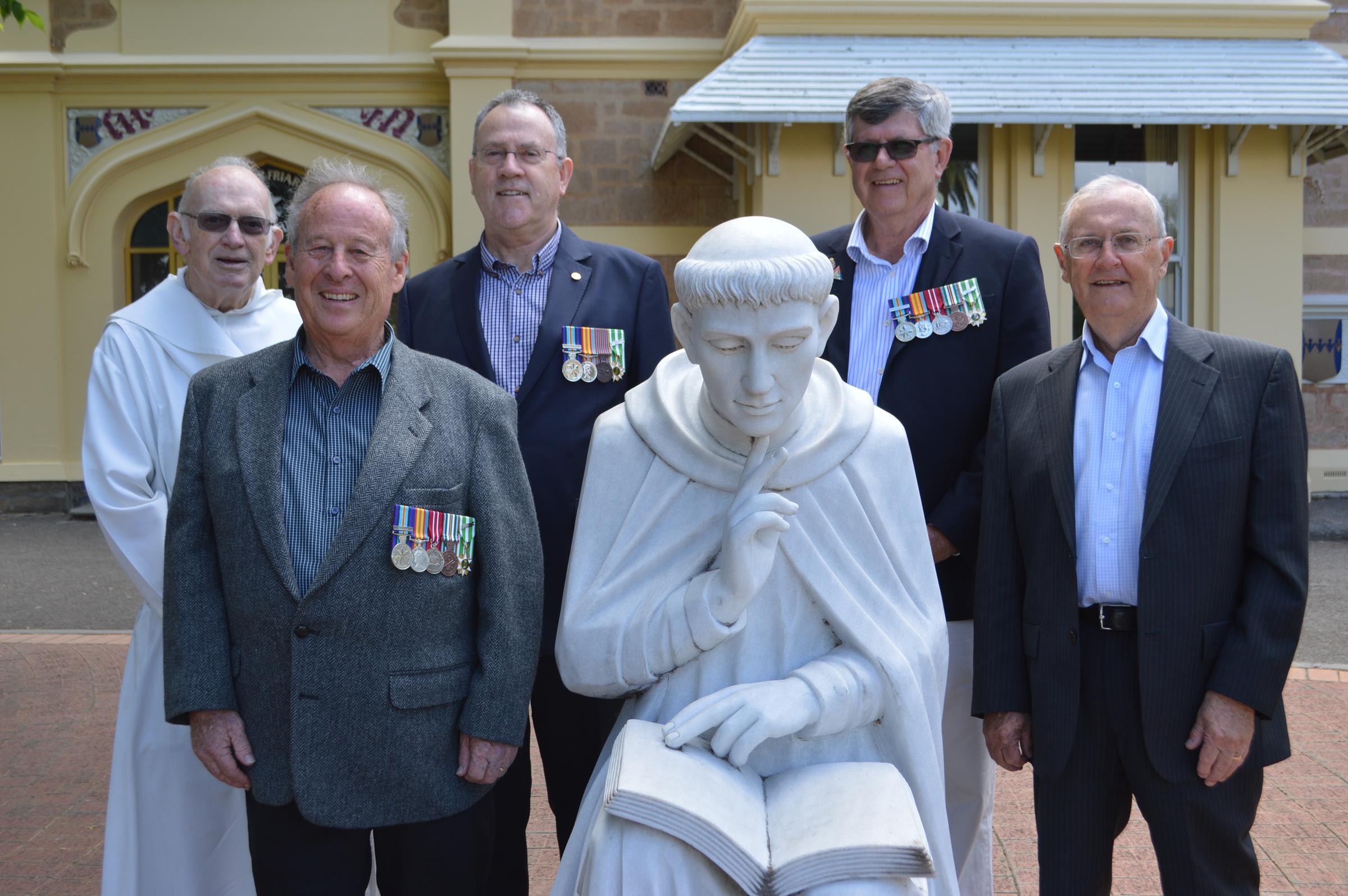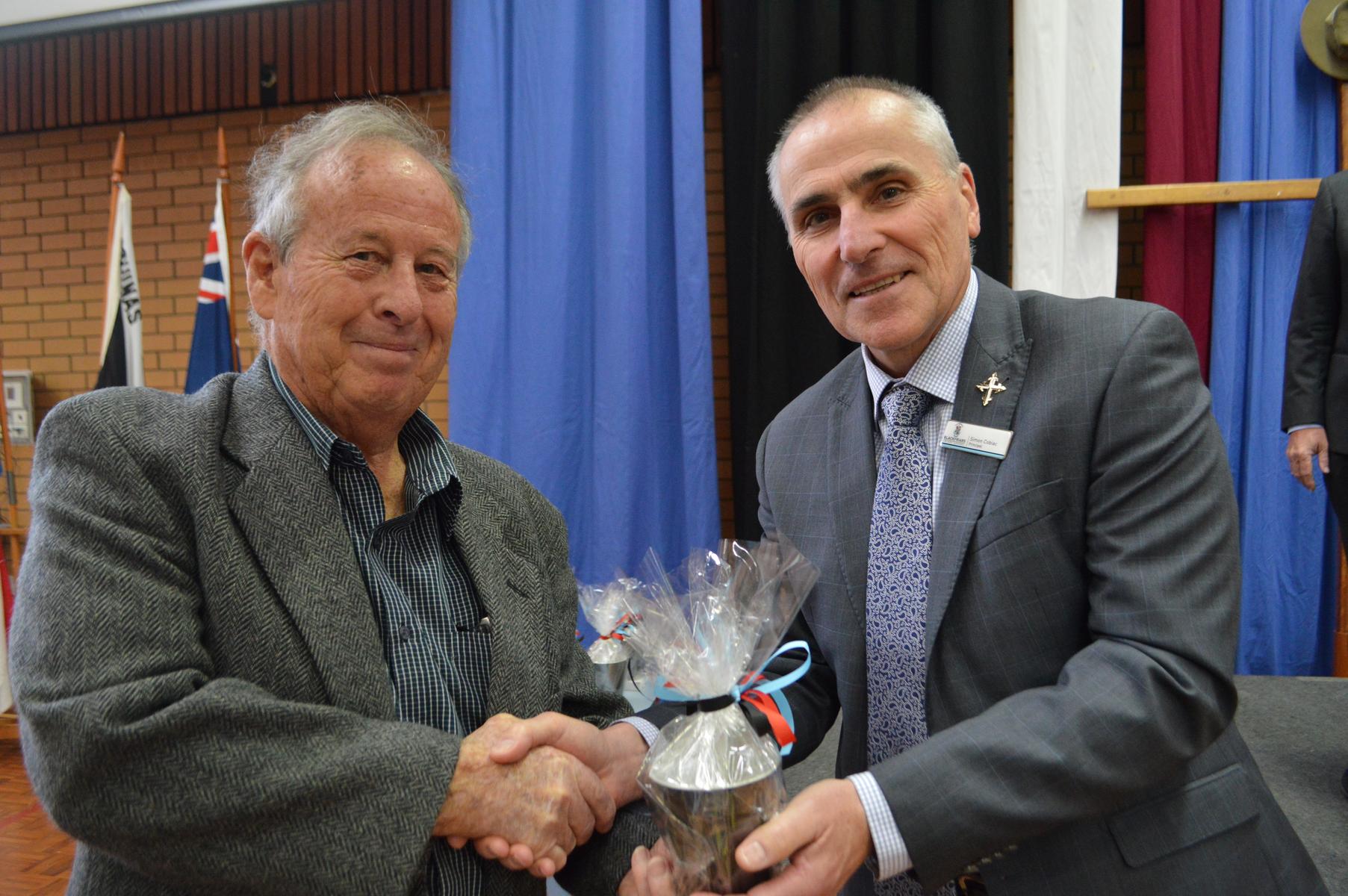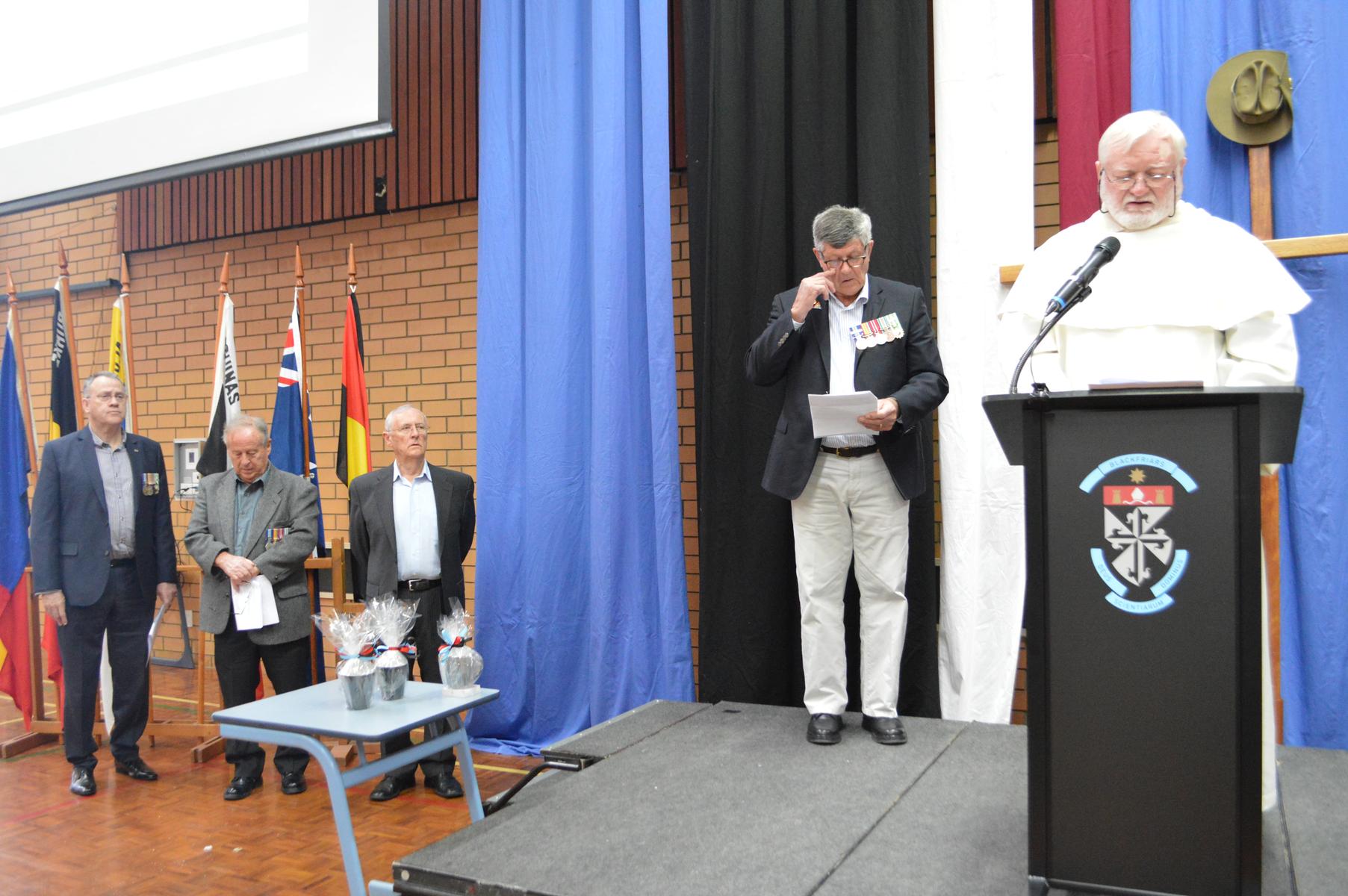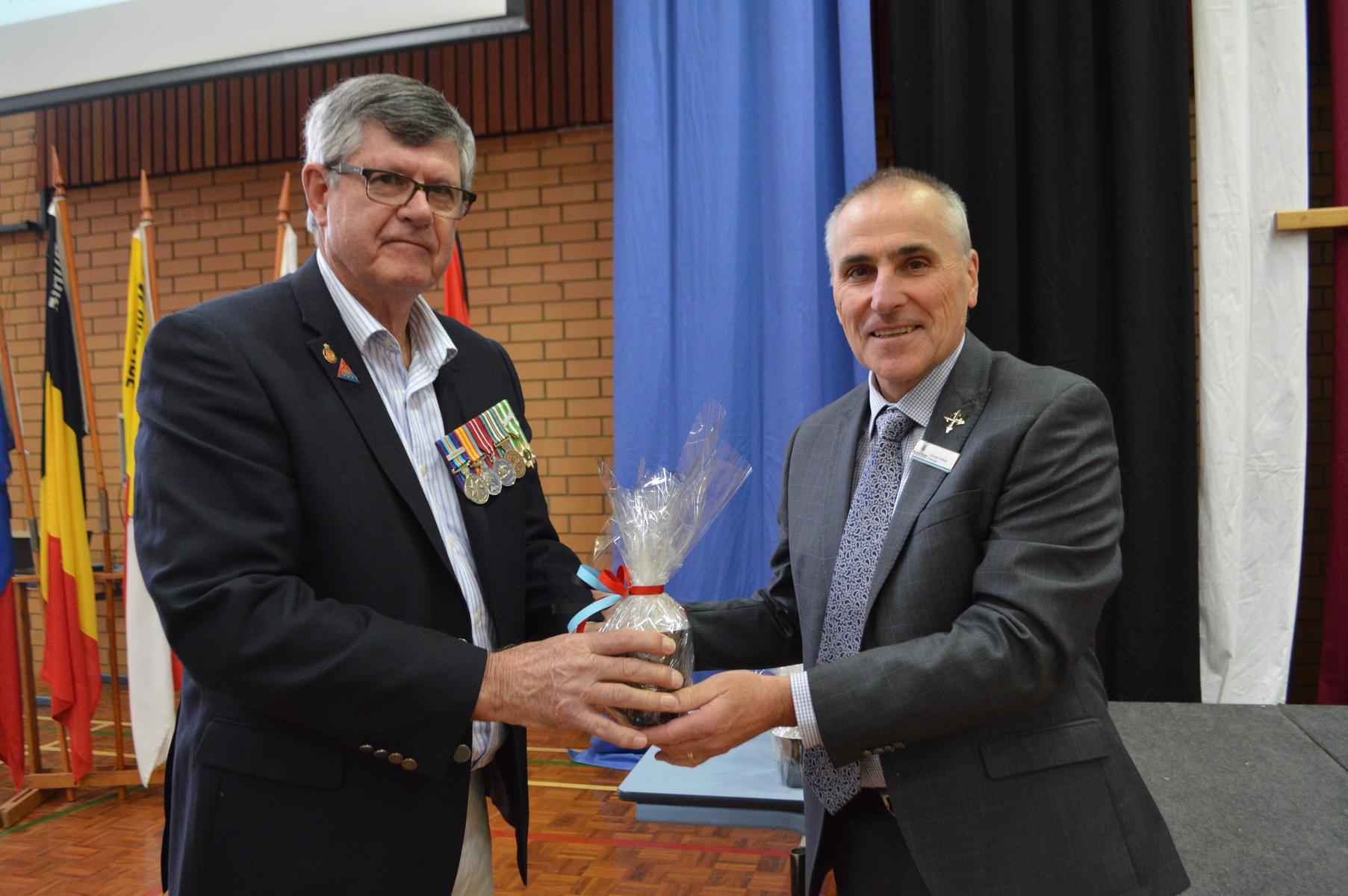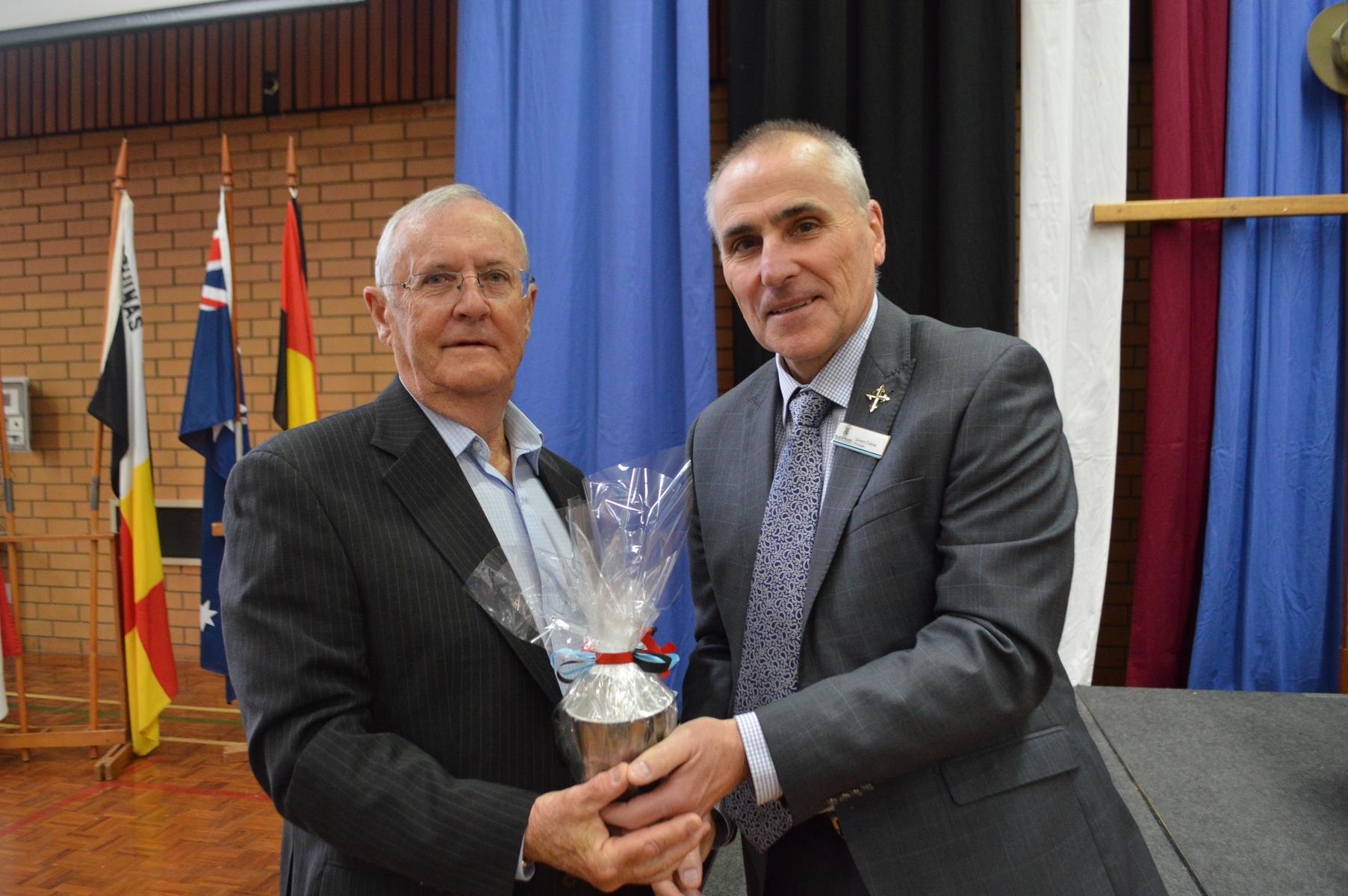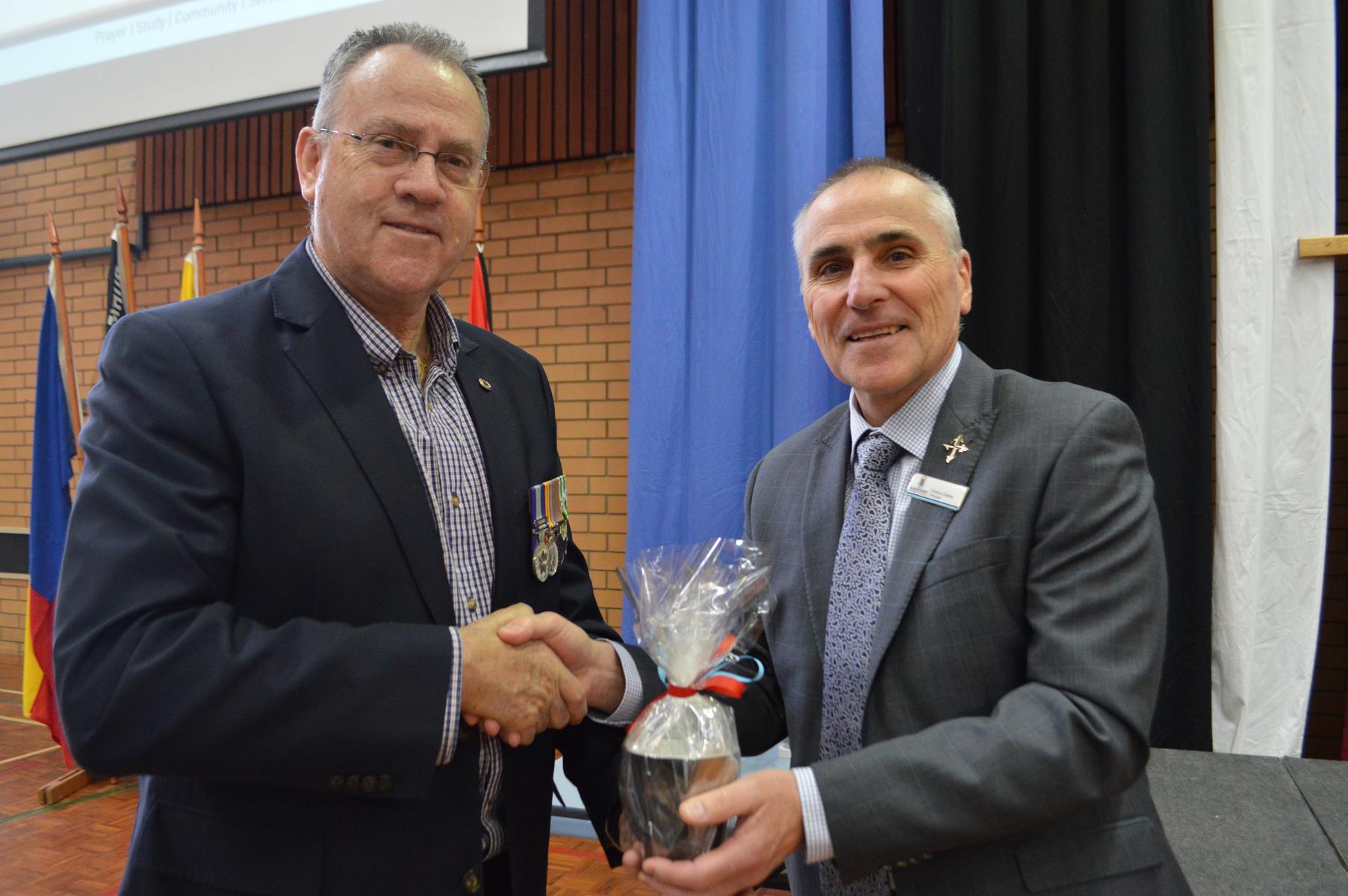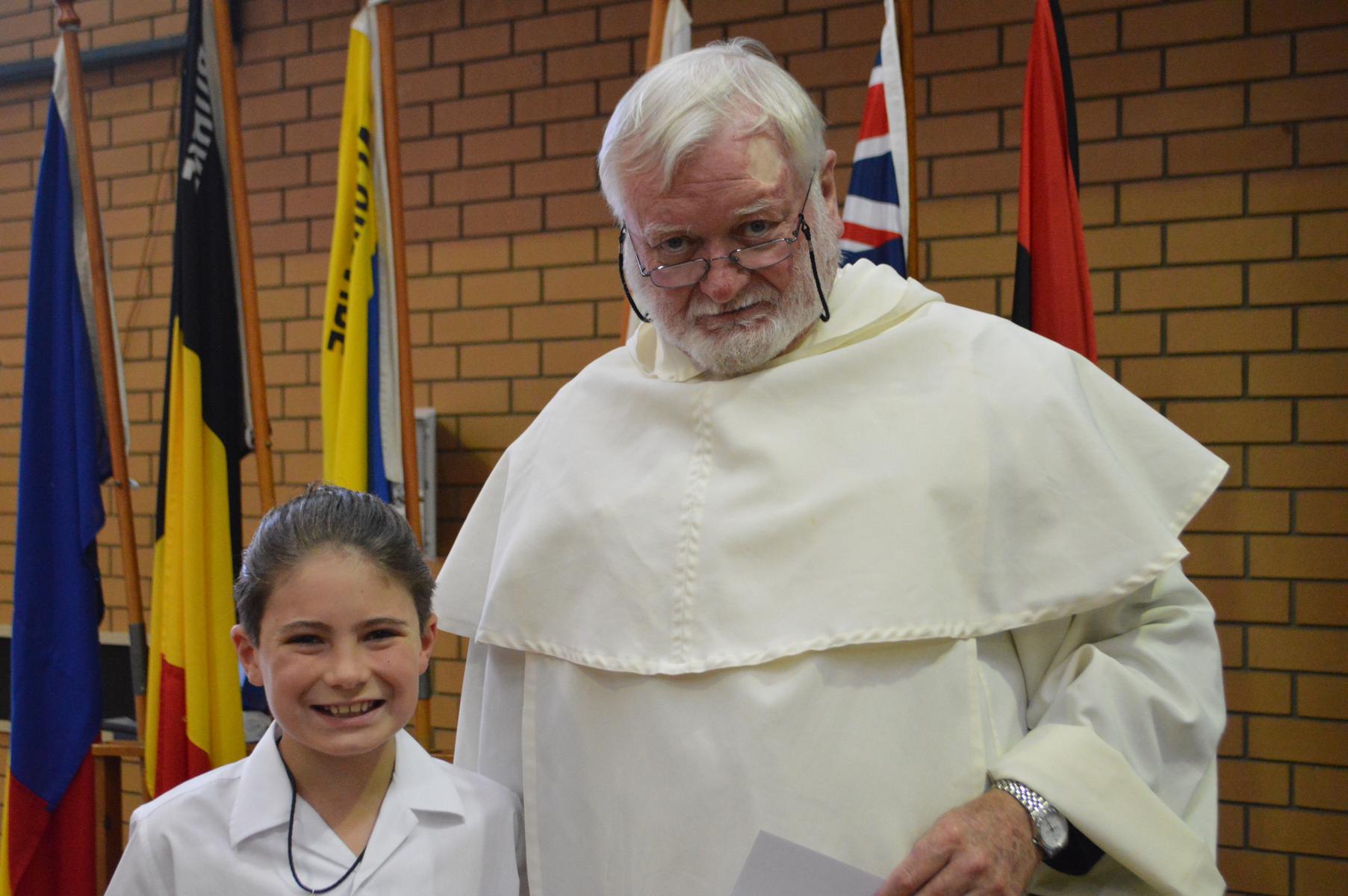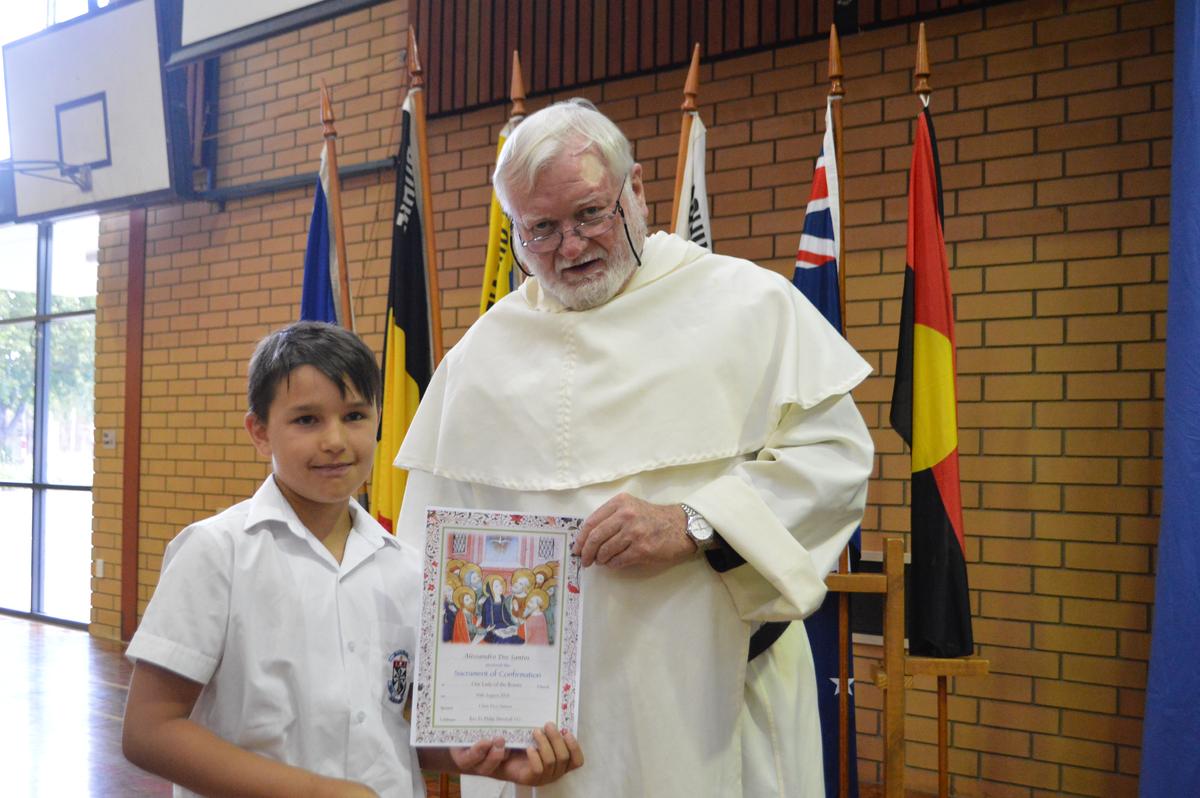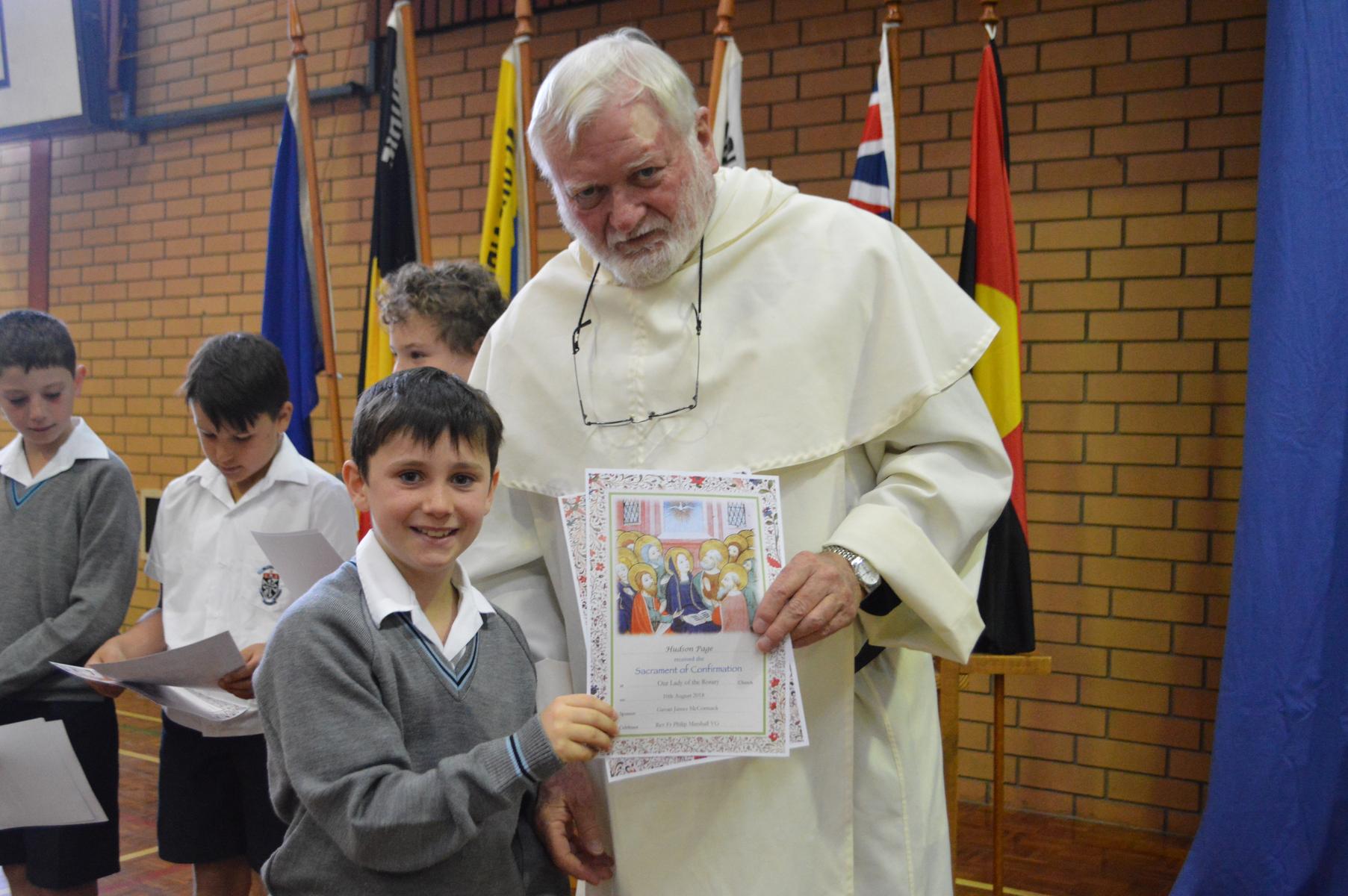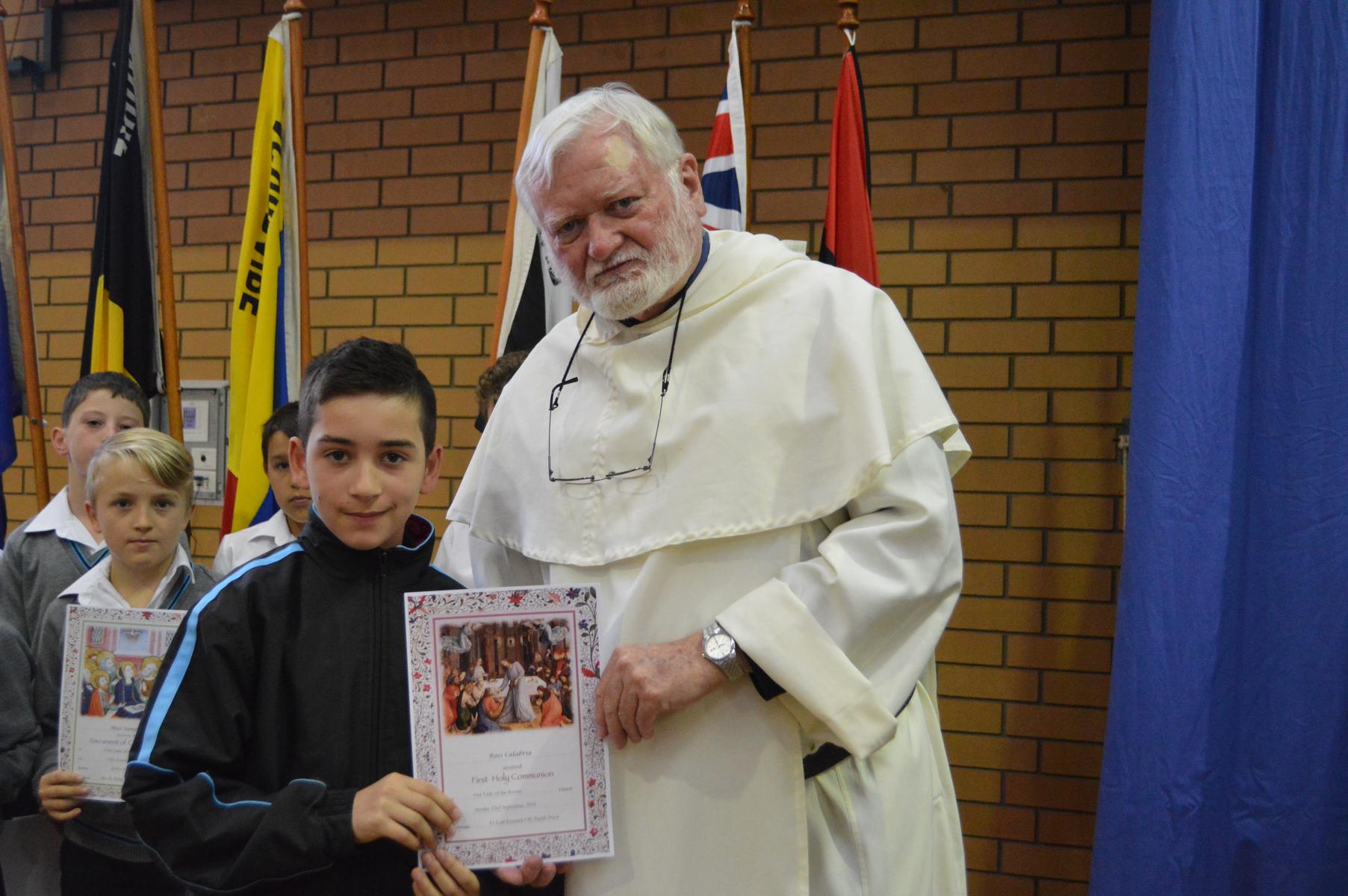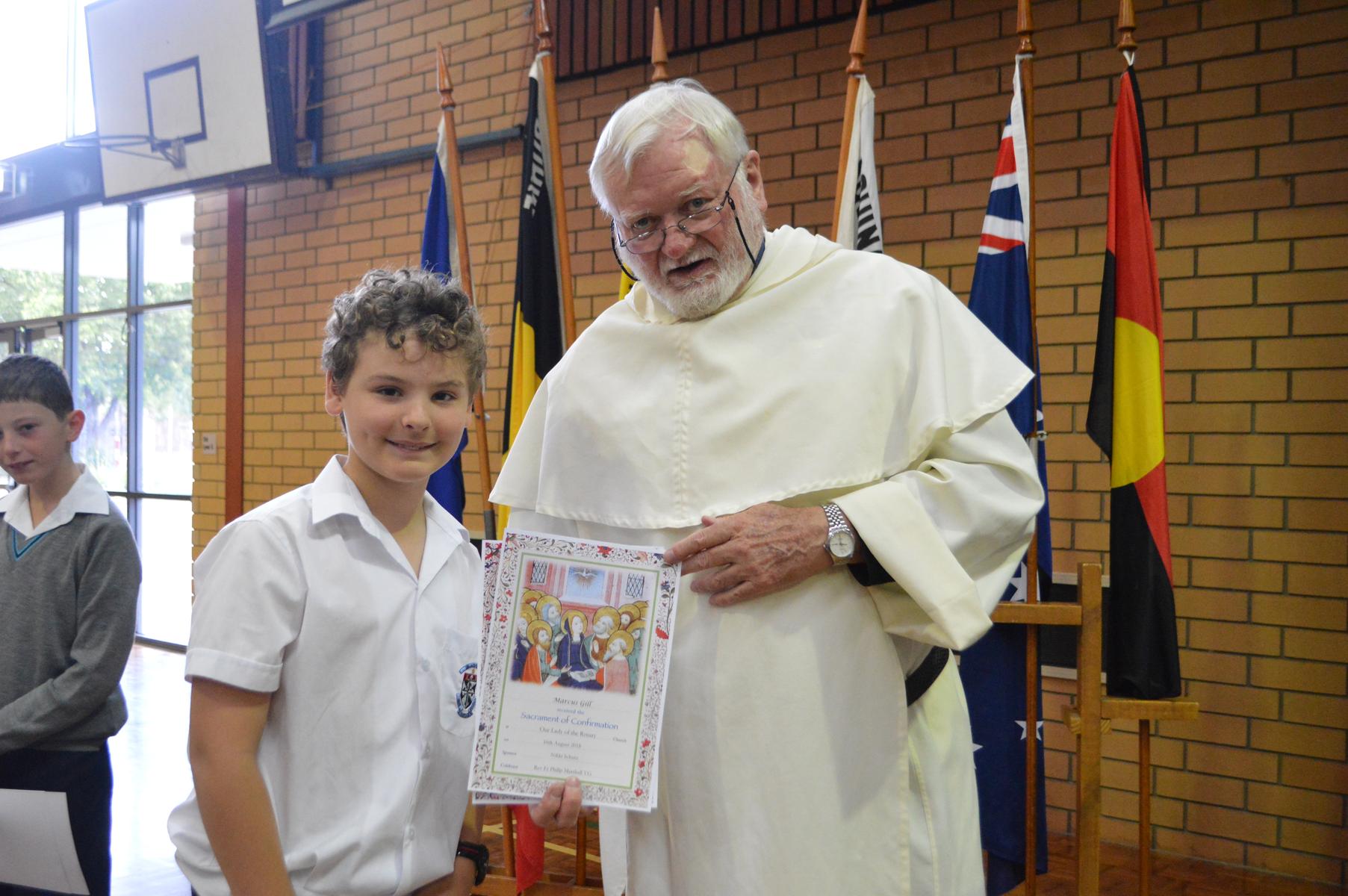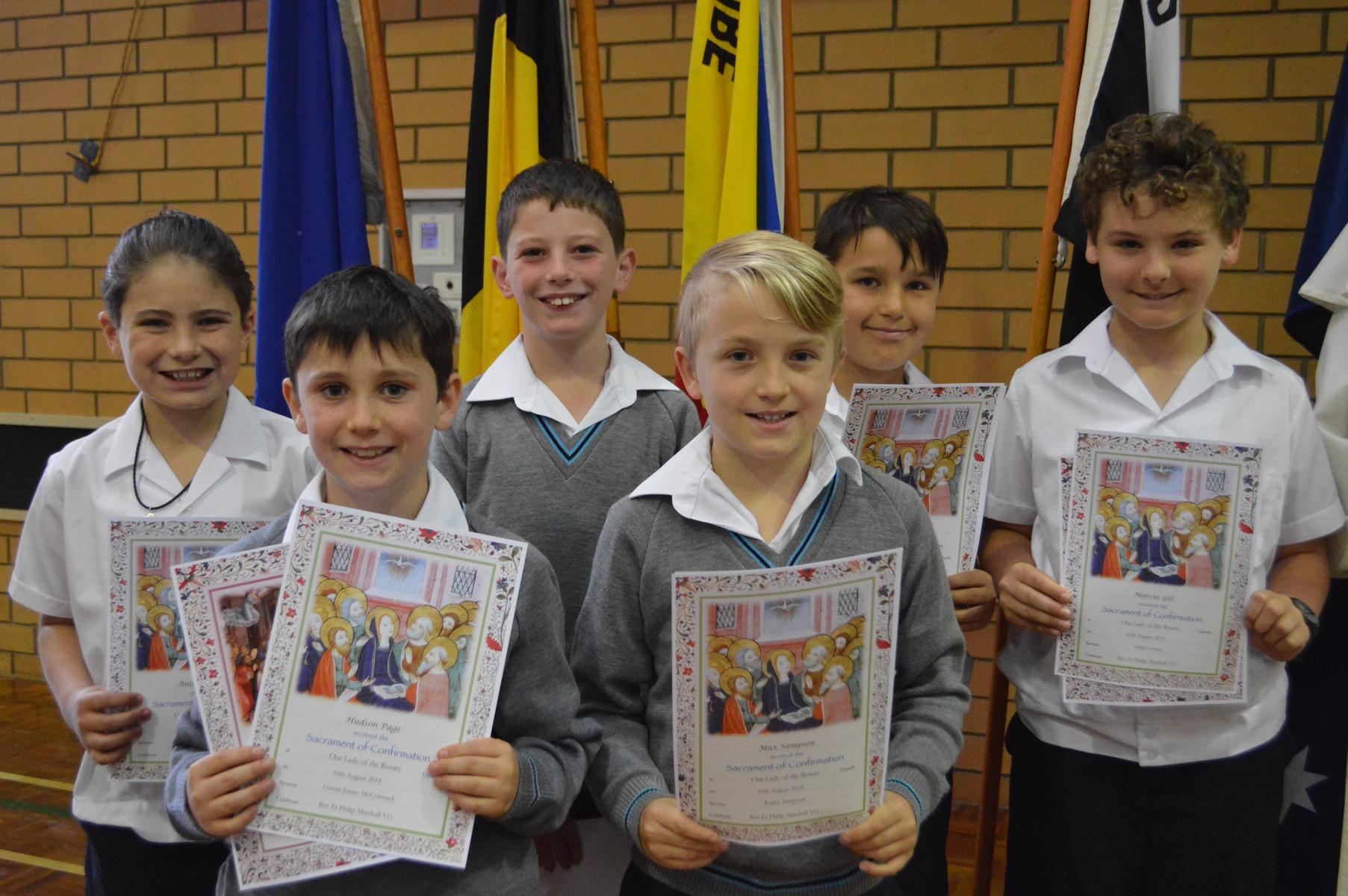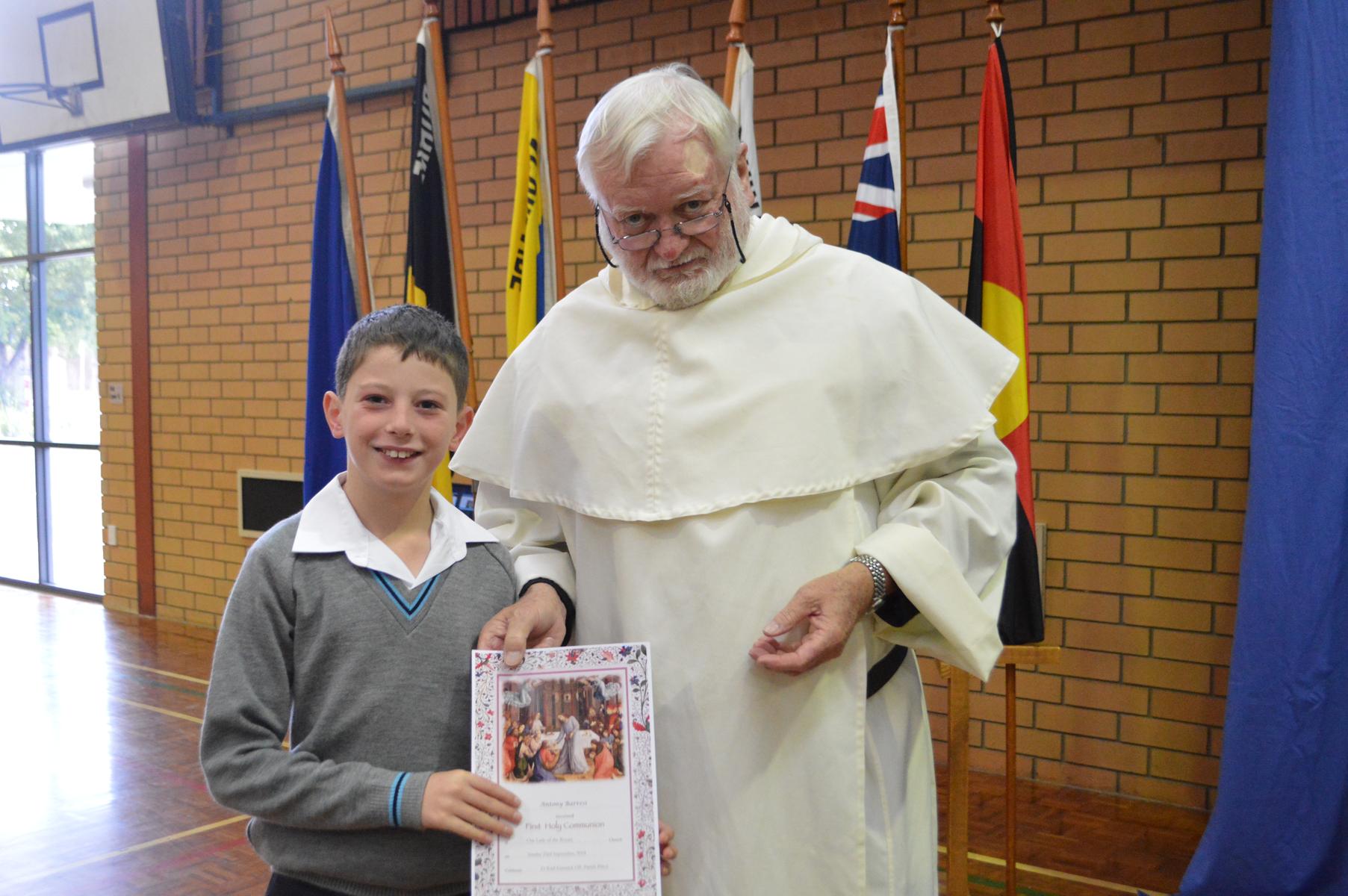Dominican All saints, Remembrance Day, and More on Sacrifice
Recently in the Christian calendar we have celebrated the feasts of All Saints and All Souls. Due to its 802-year history, the Dominican Order of Preachers have a significant number of saints without declared feast days, so the Dominicans have their own All Saints Day on 7 November. Here at Blackfriars we celebrated Dominican All Saints with Remembrance Day during a liturgy on Wednesday 7 November, which was a part of a broader assembly.
Many of the saints made enormous sacrifices for their beliefs and for living them out. Fr Kevin Saunders OP introduced Blessed Giuseppe Girotti OP to our community through his homily during the liturgy and he certainly made the ultimate sacrifice for living out his faith. A Dominican priest from the 1920s, Blessed Giuseppe found himself amidst the persecution of Jews by the Nazis from the late 1930s, and actively provided refuge and escape to safety for many through the underground.
In August 1944, he was set up by a Nazi pretending to be a Jew seeking his aid, and was arrested. During the latter part of the war – April 1945, while imprisoned at the Dachau concentration camp, he was executed and thus became a martyr for living out his faith. Blessed Giuseppe Girotti OP fought for human rights which is characteristically Dominican. He went beyond protest and had a real effect in changing, or moreover, extending the lives of many people. The story of Blessed Giuseppe Girotti OP provided a fabulous and tangible link for the remembrance of war victims and Dominican saints.
Please read further via the following link: http://www.op.org/en/content/beatification-giuseppe-girotti-op
Our service men and women have also made sacrifices in defence of others or fighting for causes that those in power deem important. As a nation, Australia forged an unparalleled reputation as fighters during WW1. A tour of the Australian War Memorial in Canberra reveals the extent to which many Australians risked and lost their lives protecting their friends. It was the men on the battlefields of Europe, Africa and the Middle-East who forged the characteristically Australian virtue of mateship during these fledgling years of our nation.
In a similar manner but in non-combat roles, Australian women also forged a reputation of immense resilience, courage, selflessness and ingenuity. These characteristics are something that have been reflected in battles since, including the war in Vietnam. During our Dominican All Saints and Remembrance Day liturgy we were joined by four old scholars who served in Vietnam. They are Peter Meaney (graduate of ’65), Barry Mouton (’64), Tony Perry (’62) and Mark Thompson (’66) (pictured below). It was a fabulous opportunity for our current students to pay homage to former Blackfriars students who made such tremendous sacrifices. I am also confident that these old scholars felt the appreciation they deserve, as well as a sense of belonging still in our wonderful school community.
6 November is a memorial for a Dominican martyr, Bl Alphonsus Navarette, and companions. The following extract details the story of their mission and martyrdom (from http://soul-candy.info/2014/11/nov-6-bl-alfonso-navarrete-benito-op-1571-1617-priest-martyr-companions/):
Dominicans were the first missionaries to Japan. The first Dominican to die in the great persecution was Alphonsus Navarrete. When Alphonsus was very young, he gave up his inheritance to enter the Dominican Order in Valladolid and, after he had completed his studies, was sent to the Philippine missions. The great persecution had just begun in Japan. The year before Alphonsus left Spain, a group of 26 Christians, including many Franciscans and three Japanese Jesuits, were crucified in Nagasaki.
Despite the dangers, the Dominicans, who had been excluded from Japan for several years, yearned to go into the perilous mission field. Alphonsus in particular, after a trip to Europe to recruit missionaries in 1610, begged to be allowed to go to Japan. In the following year his offer was accepted, and he was sent as superior of the missionary band. During the short interval of peace, they began their work, and, during six years of growing danger, they instructed the people and prepared them for the dreadful days to come.
The missionary career of Alphonsus was brief, and it was always overshadowed by the threat of death that beset the Christians in that unhappy country. However, in the few years of his apostolate, his accomplishment was immeasurable. Like his Divine Master, he went about teaching and baptizing the people. He is called the “Vincent de Paul of Japan,” because it was he who first began the tremendous task of caring for the abandoned babies there. He anticipated the work of the Holy Childhood Society by gathering up the homeless waifs and providing for their support from money he begged of wealthy Spaniards.
The warning bell of the great persecution was sounded with the martyrdom in Omura of two priests, a Franciscan and a Jesuit. Alphonus Navarrete and his Augustinian companion Ferdinand went to Omura with the intention of rescuing the relics of the martyrs and consoling the Christians. They were captured on the way, and with a young native catechist, were beheaded. Their bodies were thrown into the sea.
Five years later, on the hill of the holy martyrs of Nagasaki, more than 50 Christians sealed their faith with their blood. Some of the martyrs were beheaded, some were burned at the stake. In the group were nine Jesuits, including the famous Father Charles Spinola, SJ, nine Franciscans, and nine Dominicans, among whom were the Blesseds Alphonsus de Mena, Angelo Orsucci, and Hyacinth Orphanel. Louis Bertrand, a nephew of the saint of that same name, perished in the same persecution.
Thousands of Japanese Christians, from tiny children to old grandparents, died amid terrible torments in the profession of their faith. The anger of the persecutors was turned against all priests, brothers, and catechists, tertiaries, and Rosarians, and they made fearful attempts to stamp out all traces of the hated religion in the country. Pope Pius IX, in 1867, solemnly beatified 205 of the martyrs, among whom were 59 Dominicans of the first and third orders and 58 members of the Rosary Confraternity. Although all did not die at the same time nor place, they are listed under the name of Alphonsus Navarrete, who was the first to die.
Please read further via the following link: http://prieststuff.blogspot.com/2015/09/bl-alphonsus-navarrette-and-204.html
I recently heard a psychologist discuss martyrdom in response to a question: “what is in it for the martyr?” The psychologist was addressing matters of religion from a purely psychological perspective, so there was no consideration of “heaven” in his answer. However, his answer was insightful: “martyrdom is the ultimate sacrifice, and it must hurt. You don’t get to see the rewards. However, you know that the thing you are sacrificing your life for is worth it. Whatever it is, it must be hell to live with conceding or relinquishing it. Hence Martyrdom results in avoiding hell.” From a Christian perspective, the acts of sacrifice move us further from hell and closer to heaven. We pray that the sacrifices of our Dominican saints and martyrs, and our service men and women, have led them to a heavenly afterlife. As Christians, we are driven by and to love. The reading of our Dominican All Saints and Remembrance Day liturgy from John 15:13 summarises this love: “No one has greater love than this, to lay down one’s life for one’s friends.”
St Albert the Great
The feast of St Albert the Great, our school patron, is celebrated with a Mass at 10:00am on Thursday 15 November. Please see the letter containing information about this day and our Term 4 outreach via the attachment below:
The following information about St Albert the Great comes from our school website:
St Albert was born of the noble family of Bollstadt in Lauingen, Swabia, in 1206. In 1244 he entered the Dominican Order and became one of the most learned men of his time and founded the famous Dominican House of Studies at Cologne in 1245. His most renowned pupil was his fellow Dominican, St Thomas Aquinas.
In 1260 Albert was made Bishop of Ratisbon.
He died in 1280, and was canonised and made a Doctor of the Universal Church by Pope Pius XI in 1931. He was declared Patron of the Natural Sciences by Pope Pius XII in 1941.
Confirmation and 1st Communion
During our assembly on Wednesday 7 November, the following students received certificates in acknowledgment of this step in their faith journey: Antony Barresi, Nathan Bishop, Alessandro dos Santos, Marcus Gill, Hudson Page, Max Sampson and Ross Calabria. They are photographed receiving their certificates from Fr Kevin Saunders OP.
Mr Matthew Crisanti
<

